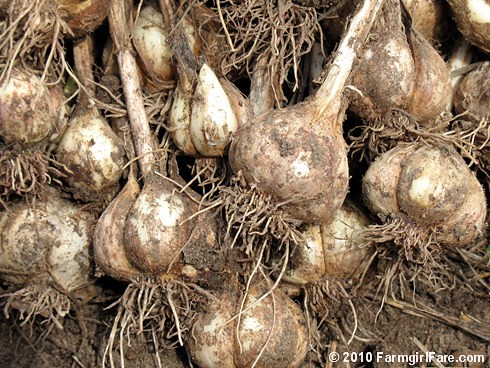Save your biggest cloves for planting next year's garlic crop.
Realization of the Day:
December is a bad time for me to plan on planting my garlic.
Of course I knew this already. The best time to plant garlic is a month or two before the ground freezes. Here in Missouri that means October. In warmer regions, you can plant after the first frost date through early winter. Ideally you want to get good root growth but no top growth before winter, although I've had sprouts shoot up before it got really cold, and they survived just fine.
If you're gardening by the moon, you want to put your garlic in the ground on a fertile day during the third or fourth quarter. (If you're interested in learning more about minding the moonsigns, Astrological Gardening: The Ancient Wisdom of Successful Planting & Harvesting by the Stars by Louise Riotte is a great book.)
The kitchen garden on Saturday, December 29th.
Miraculously, I did actually manage to get my garlic in the ground in October in both 2011 and 2010, but this year my planting plans were waylaid. Then I missed November. And on Saturday, which was my scheduled December planting day, the ground was frozen and there were three inches of snow on it. Yesterday and today are good planting days as well, except for the old snow and the new sleet. But that's okay.
Lots more below. . .










